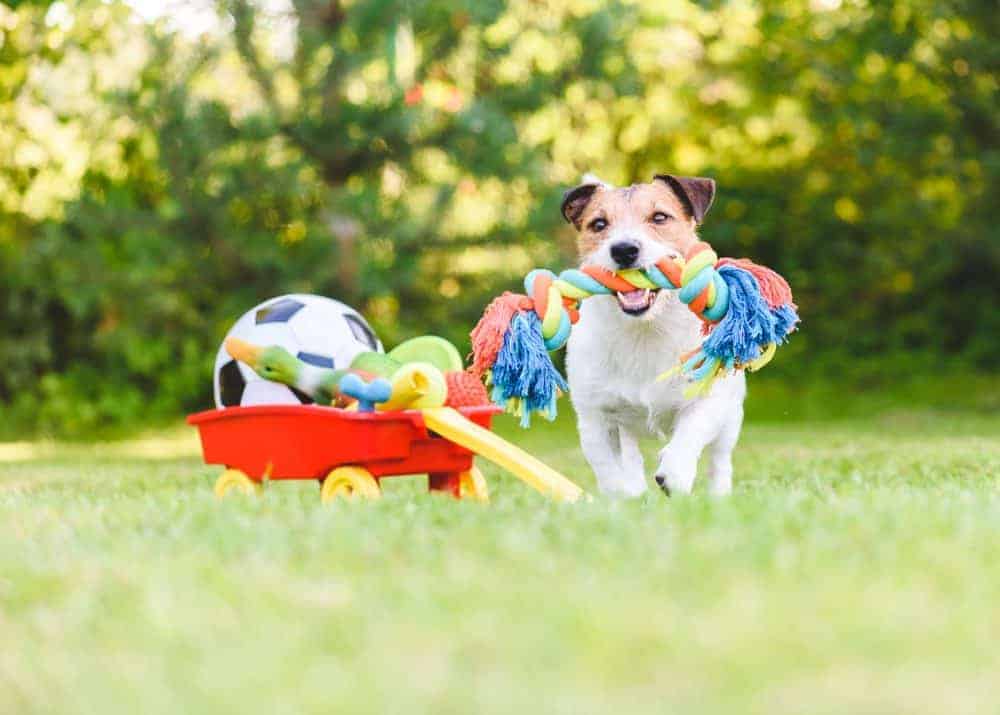
As humans, our lives consist of choices – from what time we get up and what we eat for lunch, to whether we go out for walk or chill out on the sofa with a box set. Yet, when it comes to our dogs, how much of a say do they have about what they do, how they do it and when? Could letting them make their own decisions really make them happier?
Canine experts certainly think so. Writing on Victoria Stilwell’s Positively website, author and behaviourist Debby McMullen says: “Dogs, as a general rule, are very forgiving. They accept what we dish out. But shouldn’t they get some say over what their worlds consist of? Does your ability to choose how you spend your day help you feel less stressed? The same thought process applies to your dog.”
Let your dog show their individual sparkle
Ex-military dog trainer and former instructor of Hearing Dogs for Deaf People, Sally Gutteridge wholeheartedly agrees: “We have for so long been taught that any freedom of thinking or behaviour represents dominance and must be met with further boundaries, even punishment. Thankfully things are changing, people are starting to recognise that it’s OK for a dog to show individual sparkle and make requests that are important to them.”
McMullen stresses that this isn’t about ignoring routines. She adds: “Dogs relish the safety that a routine provides – such as knowing the general time frame that they get fed, etc. These are the basic tenets of a hierarchy of needs. There are, however, an abundance of opportunities to provide choices within the routines that are necessary for daily life.”
See the world through their eyes
For McMullen, this means giving her dogs choices about things such as where they want to walk and where they want to sleep: “I have long given my dogs choices over which direction we walk when there are multiple path options. I find that most frequently their choice is not to follow an obvious path but to follow a smell. As long as the choice of where to walk is not placing us in danger, I respect their choices. It makes for a more interesting walk and a more varied terrain. I get to see the world through their eyes.
“Another area that you might offer a choice is where to sleep. My own dogs have the choice of five assorted dog beds upstairs spread between two adjoining bedrooms. They can also choose to sleep on my bed with me or have the guest bed all to themselves or share it with each other.”
McMullen advises experimenting with how you can offer your dog more choices: “Choose a word or phrase that you want to mean that you are offering a choice, and then indicate what you are offering. My own term is ‘What do YOU wanna do?’ I say this with emphases on the YOU. With a walk, I will point in either direction and say my cue phrase. I then look to be led and I verbally reward their choice. Choices in our lives provide us with a feeling of security and control. See how offering your dog choices can improve their happiness. I don’t think you will be disappointed.”
If you found this interesting, you may also like:
Dog dominance? Why it’s time to ditch this outdated idea
Our relationships with our pet dogs should be about developing a unique human/canine partnership where we both learn from each other, rather than trying to establish who’s boss
The value of reward-based training with your dog
Focusing on and rewarding what your dog can do, rather than what they can’t, makes training a much more positive experience for canines and humans alike
Tailor your training to your dog's personality
When it comes to teaching your dog new stuff, it’s never a case of one size fits all. Canine behaviour experts agree that tailoring your approach by understanding the way your dog learns is key to success
Scratch and sniff?
When you take your dog out for a walk, do you allow them time to follow their nose and enjoy lots of sniffing activity? Find out why having a good sniff is super important to your canine pal – and how it can even help address behaviour issues
Do you talk to your dog?
Research reveals that dogs can understand human communication in ways no other species can. Yet, according to a survey by Dogs Trust, only 1 in 5 dog owners think that bonding with their dog includes actually chatting with them. Are humans missing a trick?
You’re my best friend
Recent research has revealed that half of the UK sees their dog as their best friend, rather than a pet, which probably comes as no surprise to many a devoted dog owner...
Guilty dogs? When looks can lie
We all know that hang-dog look – the guilty expression on your canine chum’s face when you discover they’ve ripped up a cuddly toy or torn apart the mail. Dogs know when they’ve done something naughty, right? Or have we got them all wrong?
What ‘socialisation’ for your dog really means
If you have a puppy, you want to help them become a well-rounded, confident adult, which is where ‘socialisation’ comes in. Getting it right is an essential, but tricky, process
Sources: positively.com, canineprinciples.com














